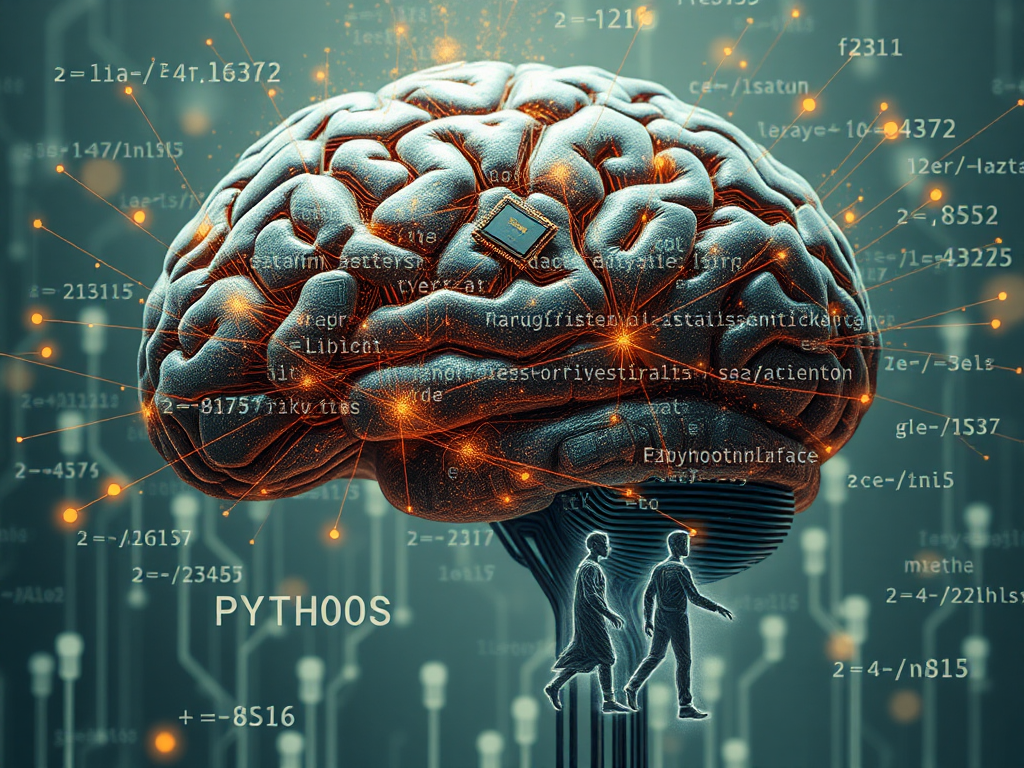Lively and Interesting
Hey friends! I'm excited to share some Python programming knowledge with you today. As an experienced Python blogger, I always enjoy explaining seemingly dry programming concepts in a lively and interesting way. Today, we'll talk about some Python basics and advanced features, as well as how to apply them in the field of machine learning. Let's get started!
Basic Concepts
The yield Keyword
Let's first look at the yield keyword. Have you ever wondered if we could generate only a portion of data at a time when dealing with large amounts of data, instead of reading all the data into memory at once? That's where the yield keyword comes in.
When you define a generator function using the yield keyword, the function returns a generator object. Each time the next() method is called, the generator produces a new value, rather than returning all values at once. This approach can greatly save memory usage.
See how clever it is? It's like a small fountain that "spouts water," spraying out just a little bit of water each time, rather than spraying all the water at once. This reminds me of an interesting example... Have you ever seen a magician perform the "infinite water spouting" trick? They use a similar technique, spraying out only a small portion of water each time, rather than spraying it all at once.
Ternary Conditional Operator
Now let's look at the ternary conditional operator, also known as the "if-else expression." Its syntax is like this:
value_if_true if condition else value_if_false
Isn't it concise? It can replace some simple if-else statements, making your code more refined. Think about it, if we need to return different values based on a condition, using the ternary operator is perfect!
For example, if we want to design a simple state machine that returns different actions based on the current state. Using the ternary operator, the code becomes very clear and easy to read:
action = "advance" if state == "running" else "stop"
Isn't it intuitive? It's like asking a question: "If the state is running, then advance; otherwise, stop." The code is like having a conversation with you!
File Operations
Checking File Existence
Before performing file operations, we usually need to check if the file exists first. Python provides us with multiple methods to achieve this.
The most common method is to use the exists() and isfile() functions from the os module. The former checks if the path exists, while the latter checks if the path points to a file. You can use them like this:
import os
file_path = "/path/to/file.txt"
if os.path.exists(file_path):
if os.path.isfile(file_path):
print("File exists!")
else:
print("It's a directory, not a file")
else:
print("File does not exist")
See how intuitive it is? It's like asking for directions: "Does this path exist? If it exists, is it a road or a house?"
Besides the os module, the pathlib library also provides similar functionality and is easy to use. However, I personally prefer the os module because it's more "native" and can be used in any environment.
Modules and Scripts
name == "main"
This is a frequently asked question: "What does name == 'main' mean?"
I'm glad you asked this question! This statement is actually used to determine whether the current Python script is running as the main program or being imported and used by another program.
When a Python script is run directly, its name variable is set to "main". But if this script is imported by another program as a module, its name variable won't be "main", but the name of the module.
So, why use this statement? The reason is that sometimes we want the script to be able to run independently as well as be imported by other programs. By putting the code that needs to be executed in the if name == "main" code block, we can ensure that these codes will only be executed when the script is run directly, and not when it's imported.
What are the benefits of doing this? Reusability and flexibility! Through this approach, we can write reusable modules that can also run as independent programs. It's like a "universal soldier" that can fight alone or join a larger troop!
See, even a small statement can reflect Python's design philosophy: simple, practical, and efficient!
Advanced Features
Metaclasses
Alright, now let's talk about a very advanced feature of Python: metaclasses. But before we start, I have to warn you, this concept is a bit difficult to understand, so get ready!
First, we all know that everything is an object. So, what are classes? That's right, classes are also objects! More accurately, each class is an instance of the type class. type is the default metaclass in Python.
So, what are metaclasses? Simply put, metaclasses are classes used to define classes. By customizing metaclasses, you can control the class creation process, thereby implementing some very advanced features.
You might ask: "Why use metaclasses? Can't we just define classes directly?"
Well, most of the time, you indeed don't need to use metaclasses. But if you're creating a framework or doing metaprogramming, metaclasses become very useful.
For example, suppose you're creating a web framework, you can use metaclasses to automatically add some methods to each view class, thus reducing repetitive code. Or, you can use metaclasses to implement some "black magic," such as automatically recording the creation and destruction of objects.
However, as I said before, for most Python programmers, understanding the basic concept of metaclasses is enough. Unless you really need to use them, stay away from metaclasses, lest you fall into endless recursion!
Machine Learning
Getting Started with Python Machine Learning
Finally, let's talk about how to use Python for machine learning. Machine learning is undoubtedly one of the hottest technologies today, and Python is the most popular programming language in the field of machine learning.
So, how to start learning Python machine learning? Here are a few suggestions for you:
-
Master Python basics. Although you don't need to be a Python expert, you need to have a solid understanding of Python's basic syntax, data structures, and flow control.
-
Learn NumPy and Pandas. NumPy provides high-performance numerical computing capabilities, while Pandas is a powerful tool for handling structured data. These two libraries are the foundation of machine learning.
-
Dive deep into machine learning algorithms. Understand common machine learning algorithms, such as linear regression, logistic regression, decision trees, support vector machines, etc. Also learn how to use machine learning libraries in Python, such as scikit-learn.
-
Hands-on practice. Theory is important, but hands-on practice is more crucial. Find some small datasets, write code yourself, train models, and continuously optimize.
-
Continuous learning. Machine learning is a rapidly developing field, with new algorithms and technologies emerging constantly. Maintain curiosity, continue learning, and keep up with the times.
Finally, I want to emphasize that the process of learning machine learning is a gradual one. Don't expect to achieve everything overnight; you need patience and perseverance. As long as you persist, you will surely reap abundant rewards!
Alright, that's all for today. If you have any questions, feel free to ask me anytime. Looking forward to sharing more exciting content with you in the next article!







